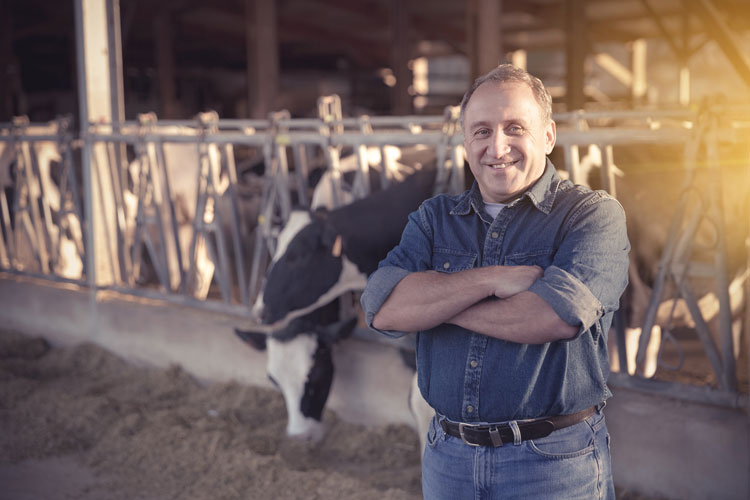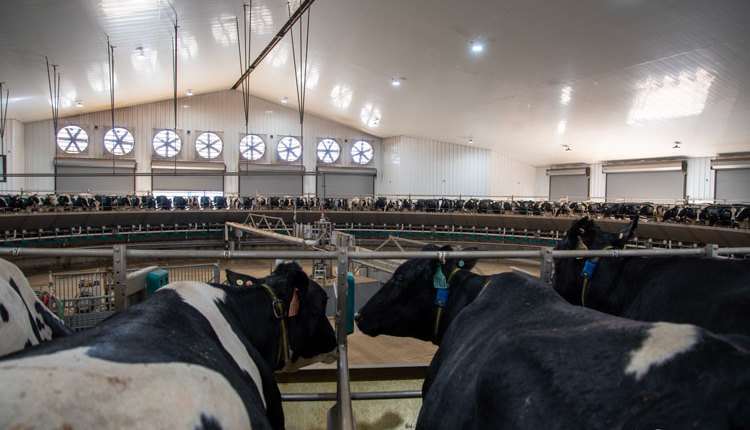The author is a vet who runs UdderWise Ltd., United Kingdom. To learn more about the author, visit his website at www.udderwise.co.uk.

Many years ago, I was invited to an industry dinner. Sitting opposite me was a young, bubbly, enthusiastic woman named Debra Veal. She was so entertaining and fun.
In my life’s journey, I put people into two different categories: drains and radiators. If you’re sitting beside someone who is a drain, you will soon feel exhausted or even depressed. You don’t want to associate with these sorts of people for any length of time. However, sitting next to someone who is a radiator is really uplifting, and in this situation, Debra beamed with energy.
Choose your attitude
Debra described how she rowed single-handedly from Europe to the West Indies. It was an extraordinary story of courage and determination. Her take-home message was that in life, you choose your attitude.
If you think that something isn’t going to work, most likely it won’t. If, however, you think you can give something a good go, then the chance of success is going to be high. Her message has stuck with me ever since, and I have told her story to many youngsters.
Begin building trust
I was asked to visit a farm in Eastern Europe that had problems with clinical mastitis. This was one of several agricultural enterprises under one company’s ownership. Before the visit, I requested the mastitis records that showed there had been 840 cases of clinical mastitis in 600 cows over the last year.
This was a 600-cow Holstein herd housed year-round in freestalls bedded with recycled manure solids. The herd calved year-round, and the average yield was 12,000 liters or 26,500 pounds of milk.
It can be tricky carrying out new visits, especially where there are major problems. First, you must build a relationship and trust. You want to bring people with you and not drive them away. At times, it’s a bit like a United Nations meeting, especially when working with people from different cultures.
The dairy farm employed its own veterinarian, who seemed very ambivalent about my visit as was the farm manager. I was told that other people had visited and made various suggestions that ultimately did not work. When I asked about the recommendations that had been made, they all came from people selling products or equipment.
As for the herd, data analysis showed that:
- 61% of cows had one or more cases of clinical mastitis in the last year, indicating environmental infections.
- 3% of cows died from toxic E. coli mastitis in the last year.
- 5% of cows had mastitis within two days of calving.
- 31% of cows had mastitis within the first 30 days of their lactation, indicating major problems with dry period and calving management.
- 5% of the herd was culled due to E. coli mastitis.
Dry cows were housed in freestalls right by the collecting yard. There were 78 cows in 70 freestalls, so cows were stocked at 112%. The recommendation is to have between 5% and 10% more freestalls than cows.
Unfortunately, the dry cows were packed in like sardines. It didn’t help that the dry cows were housed very close to the milking parlor. Any cows that were dried off in the last number of days would have let their milk down at the sound of the vacuum pumps, raising the risk of dry period infections.
Cows were given blanket antibiotic dry cow therapy, but the farm staff didn’t use an internal teat sealant. This was tried many years ago but there were a significant number of cows that died immediately after drying off, so the practice was stopped.
Cows moved from freestalls into a straw-bedded area three weeks before calving. The straw pens were bedded twice a week and cleaned out every two weeks. Straw was stored outside and was wet, which meant it would not absorb much moisture.
The bad bedding mix
These pens were bedded with straw right up to the feed barrier. Cows were lying down in the same area where they stood to eat. This area was wet and squelchy. The udders and teats of these cows were dirty. These cows were kept in groups of six and overstocked.
Cows calved in individual straw pens. The pens were cleaned out intermittently and were often dirty.
For the first two days of lactation, cows were kept in a separate group on a loose straw yard so that their colostrum could be collected and fed to calves. These cows were moved to freestalls on Day 3 when their milk could be sold. The cows in this straw yard pen were dirty, overstocked, and had wet beds. Udders and teats were dirty. I was told that, at peak calving time, the number of cows in these pens would climb by over 50%.
It was clear that there were problems. The list included overcrowding and management of the dry cow freestalls, and straw pens for the freshening, calving, and cows for the first two days of lactation.
I asked whether other advisers had commented on the environmental issues and was told that few had walked around the cows. Most met in the office and were very keen to sell the products they had to offer.
I watched the dry-off procedure and the hygiene was very poor. To be more specific, the individual drying off cows was scruffy and had poor personal hygiene, which is never a good start.
What’s more, the dry-off procedure was delegated to a technician who had not been properly trained. He wore dirty gloves, didn’t disinfect the teat ends before infusing any intramammary tube, and left the box of antibiotic dry cow tubes on the parlor floor where it was frequently splashed with feces. Nobody thought of supervising how he worked. Impeccable hygiene is needed at dry-off. Clearly, this was the wrong person for this job.
Potential improvements
I suggested that the dry cows in freestalls be moved to a pen in a barn far away from the milking parlor to reduce the risk of leaking after dry-off. I highlighted the need to reduce the stocking density in all the cows from dry-off through to the freshly calved group on straw yards. I recommended the use of internal teat sealants that could be administered by the on-farm veterinarian after appropriate training.
For every suggestion I made, the farm manager and the veterinarian made two, if not three, reasons why they would not work. There is a great expression, “Nothing is easy to the unwilling.” I could now see why the previous people were so “popular.” The attraction of buying a product or equipment is to remove the problem without having to do anything else.
Eventually, after a lot of discussion and gentle persuasion, we did make progress. They agreed to improve the environment and use internal teat sealants. Having spent one and a half days on the farm using all my diplomatic and persuasive skills, I felt happy that at least some progress could be made. Overall, the farm manager and the veterinarian were drains; I was so glad to leave.
A week later we had a Zoom call to deal with any clarifications, and it was such a negative meeting. They had changed their mind about everything apart from the use of internal teat sealants, and even so, the veterinarian said that this would be carried out by the technician with poor hygiene.
It’s unbelievable that in today’s world, there are still some people who have such negative attitudes. The owner would like to remove the manager and the vet, but he knows that he is unlikely to be able to get anyone to replace them in this tight labor market. This was one visit that I will never forget for all the wrong reasons.










